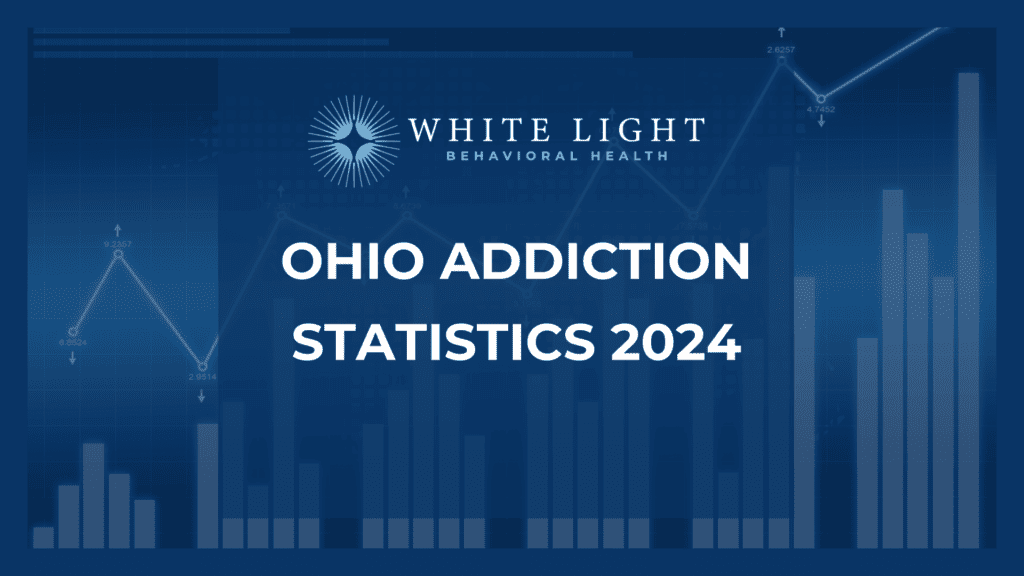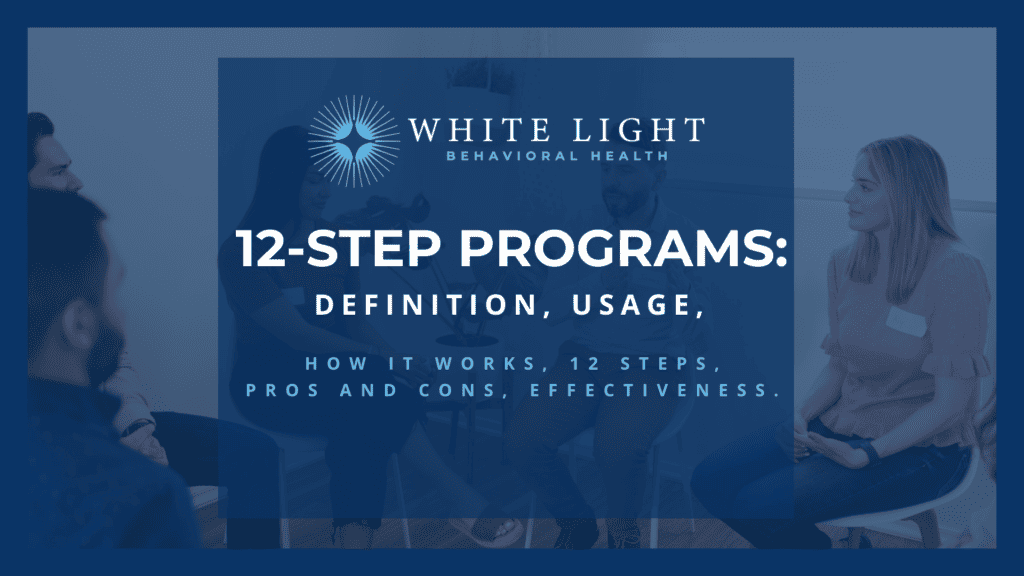Understanding Why the Withdrawal Process Can Be Uncomfortable
One of the fears that prevent those suffering from a substance use disorder from getting help is the fear of going through drug withdrawal. Drug withdrawal is an aspect of the detox and recovery process that gets much attention in the media and on television.
Drug withdrawal describes a series of symptoms individuals go through after they suddenly quit or drastically reduce their use of alcohol or drugs. Withdrawal symptoms can be different for each person. They are often based on the person’s physical makeup, the amount of time they have used a particular drug, and the substance they used.
Certain substances can produce life-threatening withdrawal symptoms if individuals try to quit the drug cold turkey, especially if they’ve been dependent on the drug for a long time and are now addicted. However, the drug rehab experience found at White Light Behavioral Health is designed to provide a full-treatment continuum for clients in Ohio. This includes the diagnosis of substance use disorder, mental health disorders, or both. The mission is to provide clients with a healthy and valuable experience. Clients can go through the withdrawal process in a safe respectful idyllic environment, all while receiving compassionate medical care.
How Does Withdrawal Affect the Body?
Although each person experiences withdrawal uniquely, there are some general symptoms that people tend to experience when they withdraw from a particular drug. For example, when a person takes an opioid, like Vicodin, the gastrointestinal system slows down. When people withdraw from Vicodin, their symptoms might be the opposite, leading to an overactive gastrointestinal system that causes such symptoms as vomiting, cramping, diarrhea, or nausea.
On the other side of the spectrum are stimulants, like methamphetamines and cocaine. These typically produce psychological withdrawal symptoms. Heroin, certain prescription drugs, and alcohol can produce a powerful combination of physical and psychological symptoms.
Physical Symptoms
Physical withdrawal symptoms are the symptoms individuals experience when they suddenly quit using a drug. They can include clammy skin, lethargy, sweats, shakes, muscle pains, and spasms.
Behavioral Symptoms
Behavioral symptoms of withdrawal can impact the way individuals treat themselves or how they interact with others. It is physically and emotionally uncomfortable to stop using the drug. As such, it can be difficult for people to experience withdrawal symptoms while interacting with others or learning new skills or tasks. This leads to frustration, agitation, and irritability. Anger flashes are another symptom often seen in people when withdrawing from almost every substance.
Sleep Issues
When people actively use a substance, their body constantly fights to regulate their internal sleep system. Once they stop using drugs, the balance the body created with the drug use is thrown off-balance. The result is symptoms, like interrupted sleep, insomnia, nightmares, or sleeplessness.
Gastrointestinal Issues
Substance use affects people’s appetite in one way or another, either making them want to consume more food or dulling their desire to eat. Their appetite is also affected once the harmful substance is removed from the body. Eating can be challenging because there was a certain balance in the internal gastrointestinal system, while they were on the drug. Vomiting, nausea, and stomach cramps are common symptoms of drug withdrawal.
Cognitive Issues
Cognition describes a person’s ability to think and process information. When individuals use a substance or alcohol, their mental clarity, reasoning, and ability to capture and learn new ideas are impacted. When they quit drugs, regaining regular cognitive abilities becomes a challenge. It is common for individuals to experience disorientation and confusion while going through withdrawal. It is also common for them to experience a slowed thought process or have difficulty concentrating.
Withdrawal Symptoms Based on Drug Type
The symptoms mentioned above describe generic withdrawal symptoms. However, some symptoms are specific to certain misused substances.
Heroin withdrawal can cause individuals to experience muscle and bone pain. They might feel restless or experience hot and cold flashes. Diarrhea, nausea, vomiting, the inability to sleep well, and the appearance of goosebumps are common.
Alcohol withdrawal can cause individuals to feel nervous, anxious, jumpy, or depressed. It is common for them to experience an increased heartbeat, clammy skin, and dilated pupils. Gastrointestinal issues, such as nausea and vomiting, and cognitive issues, such as brain fog are common, too. In severe cases, withdrawal can include seizures, tremors, hallucinations, and uncontrollable agitation.
Cocaine withdrawal can lead to individuals feeling fatigued, having reduced cognitive skills or movement, feeling depressed, or having a sense of restlessness. It is also common for them to experience increased appetite while in cocaine withdrawal.
Marijuana withdrawal can trigger sleepiness, irritability, a reduced appetite, and anxiety.
Detox and withdrawal are necessary parts of the recovery process. Some people make the mistake of trying to go through the withdrawal process from one or multiple substances on their own. This is not typically recommended because individuals can experience a mixed type of withdrawal. This means that it is difficult to predict the course of their withdrawal symptoms. This is why it is important for those going through the withdrawal process to do so under the supervision of experienced and caring professionals.
Are Detox and Withdrawal the Same?
Detox and withdrawal are two words that are commonly used when discussing the challenges of quitting a substance. These two terms are related, but they are not interchangeable. Understanding the difference between detox and withdrawal can make some of the challenges of overcoming substance use disorder less scary and more manageable.
What Is Detox?
Detox, short for detoxification, is the process by which your body and mind release the chemical substances that have been stored over the months or years of substance abuse. When used in higher quantities, drugs like alcohol, opioids, and marijuana, can impact your cognitive abilities and physiological functions. Your body starts to rely on the substance. When the substance is gone, your body responds quickly and intensely.
Detox can be divided into three types. Inpatient detox is where a person stays at a facility. This is the safest way to go through the detox process because professional assistance is always readily available.
Outpatient detox can be successful, but it does pose a higher risk of complications or relapse. During outpatient detox, individuals receive supervision from their friends and family and will interact daily with medical professionals.
Medical detox is where medications are used to ease the mental and physical symptoms linked to withdrawal. Medical detox can help mitigate some of the impact of withdrawal, making it easier for individuals to break free from the substance without relapsing.
Detoxification can be intense. Because the side effects of detox can be overwhelming for some, it is key to have routine medical supervision throughout the process. With time, as the withdrawal symptoms diminish, the body will learn to regulate itself without needing to use the substance.
How Long Does Detox Take?
Detox is different for each person. However, there are some general patterns and cycles that most patients experience. During the first 12 hours, withdrawal symptoms are mild. Eventually, they will start to increase in intensity. For the first two or three days, withdrawal symptoms will reach their maximum intensity and may include panic attacks, hallucinations, seizures, and tremors.
During the first week, withdrawal symptoms will ebb and flow. Here is where medical detox can be effective in providing some pain relief.
At the end of the first week, symptoms begin to taper off. However, there may be some residual symptoms that will exhibit themselves. The most intense withdrawal symptoms are finished after the first couple weeks of detox. In rare cases, individuals may experience post-acute withdrawal syndrome, requiring them to receive additional prescription medications to manage the side effects.
Most people will complete a drug detox program in a few days to a week. However, the recommended type of detox program will vary based on the drugs used, how much of the drug was used, the individual’s overall health, and how long the person was using the drug. Detox is not rehabilitation. It is the first step in treatment. From there, patients will enter rehab therapy to learn coping skills that will allow them to stay away from the substance in the long term.
What Is the Difference Between Detox and Withdrawal?
The basic difference between detox and withdrawal is a person’s treatment program. When individuals detox, they will experience withdrawal. However, detox includes individuals receiving assistance, support, and medical supervision. A detox program involves allowing individuals to go through the withdrawal process in a safe environment.
Because of the discomfort many people experience, the withdrawal process can be intimidating. However, drug and alcohol detox can help you safely withdraw from the substance, minimizing the risk of complications. Certain symptoms, like increased blood pressure, dehydration, and seizures, can be life-threatening when withdrawal occurs outside a protective medical environment.
Medications Used to Ease the Withdrawal Process
Nothing can completely remove the discomfort a person experiences during withdrawal. However, certain substances can be used to stabilize a person going through withdrawal. For example, Clonidine can be used to reduce anxiety, sweating, and chills for those experiencing opioid withdrawal. Lofexidine is in the same class as Clonidine and can be used to minimize some of the shakiness and tremors associated with opioid withdrawal. Buprenorphine has been approved by the FDA to help control and lessen cravings for opioids during withdrawal symptoms. Methadone is a full opioid antagonist medication. It can help stabilize individuals going through opioid withdrawal and recovering from opioid use disorder. Benzodiazepines are used to manage acute alcohol withdrawal, including seizures.
One of the primary goals of using medications in detox is to facilitate long-term treatment efforts. Once the withdrawal time frame has been successfully managed, clients can begin residential or outpatient rehabilitation. This can include therapeutic interventions and long-term medical care as needed.
Is the Withdrawal Process Worth the Effort?
If you are considering getting help for a substance use disorder, you may be considering the benefits of recovery versus the discomfort of withdrawal. Although withdrawal symptoms can be uncomfortable, the benefits of stopping substance use greatly outweigh the harm that addiction to drugs and alcohol causes.
Withdrawal symptoms produce a temporary discomfort that can last a few days to a few weeks. But this pales when compared to a lifetime of pain, discomfort, and sadness from addiction. This is especially true for individuals who are battling mental health challenges due to substance abuse.
Thinking of how the process ends can help you make it through the withdrawal process. During withdrawal, you may feel a desire to leave treatment or break free from the therapeutic process. These feelings are natural. However, as painful and as uncomfortable as withdrawal symptoms are, if you just hang in there, there is the possibility of having an exciting, fulfilling, and happy life ahead of you.
The key to making it through withdrawal is to take everything one minute, one hour, and one day at a time. At White Light Behavioral Health, we are committed to helping you make the detox and withdrawal process easier. We provide you with a safe, supportive environment while providing medical services, rest, and nutrition.
You must stay positive. Learning to live a sober life will be one of the biggest journeys you take. Remember, some of your strongest feelings of hesitation are produced during withdrawal. But they will diminish with time.
Finally, keep in mind that your goal is recovery. When you make it to the other side of the withdrawal process, you might think that you’ve kicked your addiction. Remember, your goal is full recovery, not just to get temporarily sober. You can achieve your goal. Improvement is gradual and steady. But when you reach your recovery goal, any discomfort you experience along the way will be more than worth it. Contact White Light Behavioral Health to find out how we can help.

Share This Post



